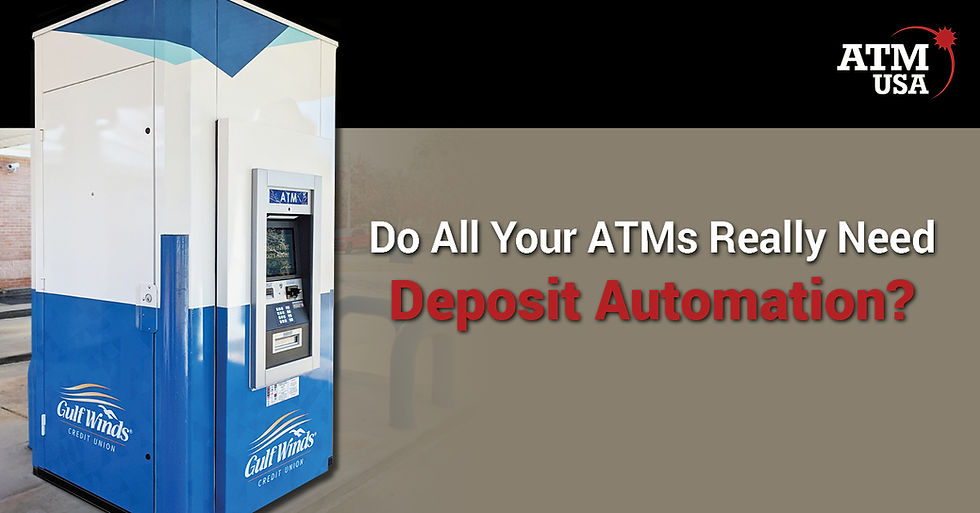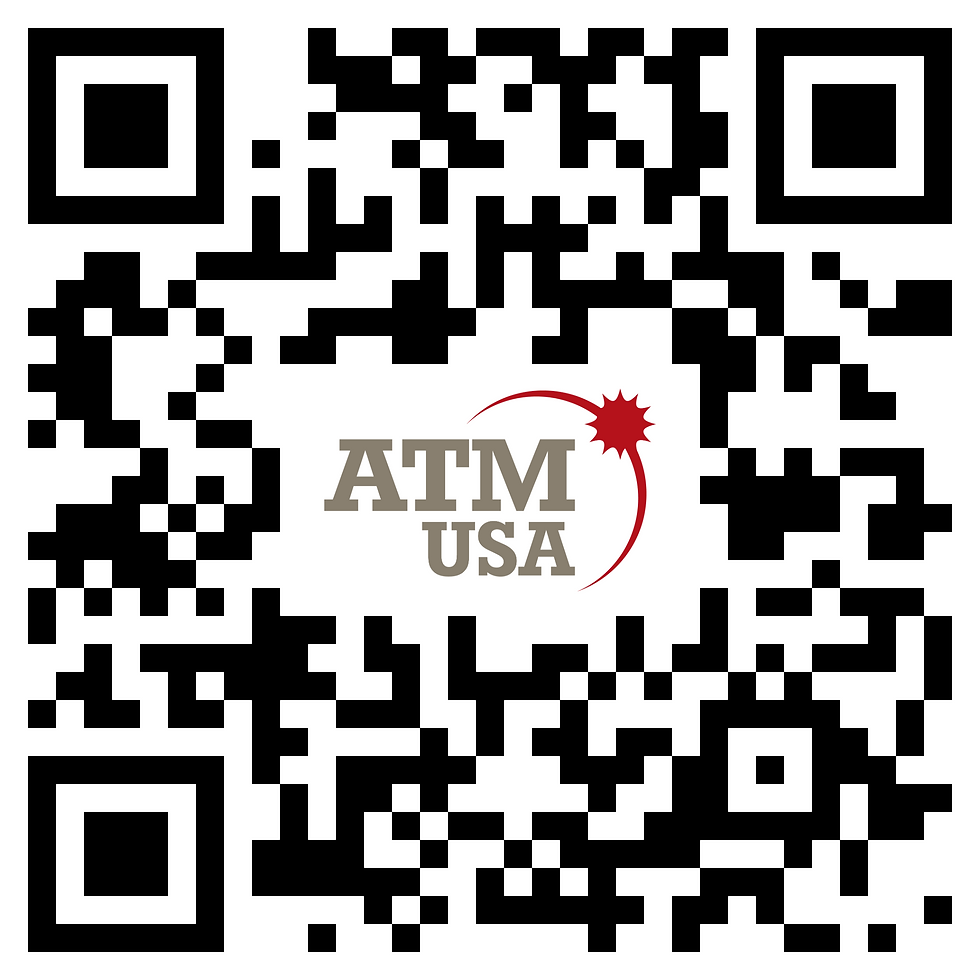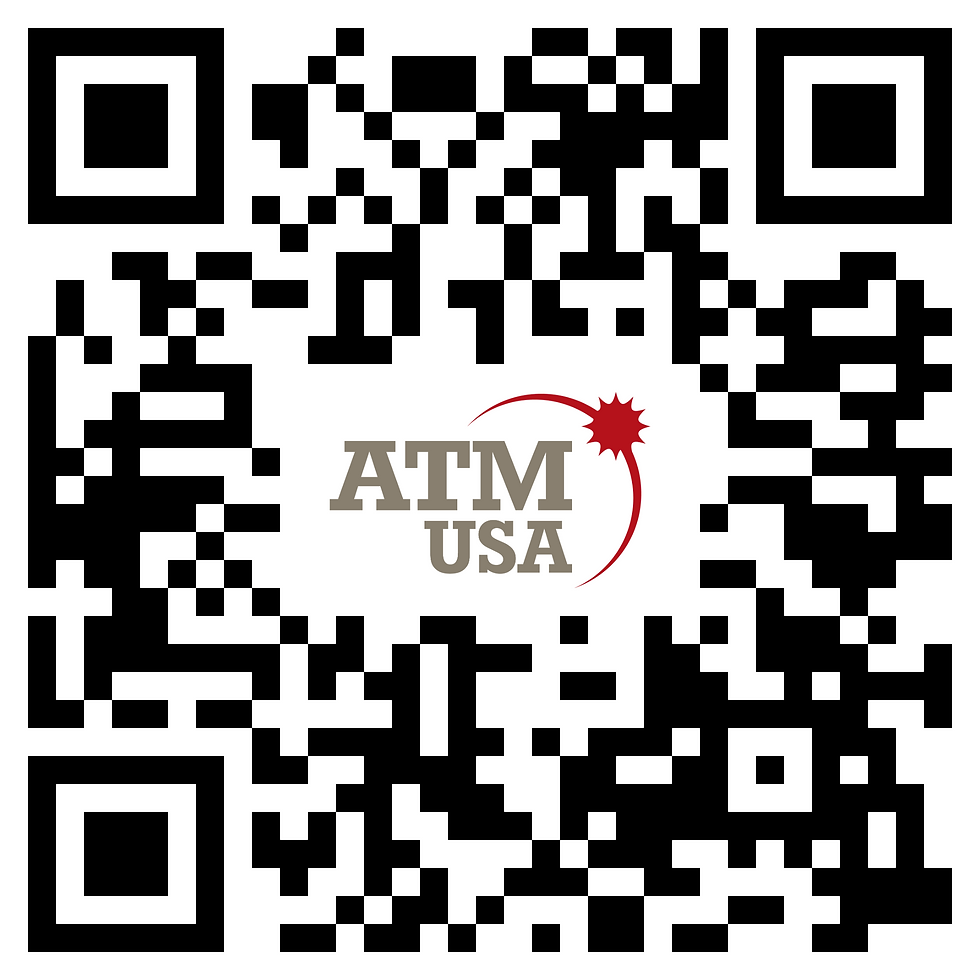Do All Your ATMs Really Need Deposit Automation?
- Darren Smith
- Sep 25, 2023
- 3 min read
Updated: Oct 3, 2023
by Darren Smith | Originally published by CUInsight
Major changes are on the horizon for ATMs that will require significant investment. With PCI regulations looming, most credit unions will need to upgrade their fleets or replace outdated machines. But in an era of mobile and digital banking, is keeping deposit-enabled ATMs necessary?

What ATM Changes are Coming?
All ATMs must comply with new PCI TR-31 encryption standards as of January 1, 2025. Shortly after these changes, looms the Windows 11 migration with support for Windows 10 ending in October of 2025. And, while extended support packages can temporarily delay required upgrades, they represent additional expenses on top of the eventual updates that will need to be made to meet PCI requirements.
To maintain deposit automation functionality, credit unions will need to upgrade Windows. But with declining usage, is deposit automation still a must-have? Or should credit unions transition to a lower-cost Windows CE operating system?
Who is Using Deposit Automation?
Despite ubiquity, deposit automation is heavily underutilized. Surveys reveal the average American uses an ATM for deposits less than three times per month. In fact, most members have turned to mobile deposit to meet this need. In the past year, 70% of mobile banking users have deposited a check via their smartphone.
In 2021 Bank of America reported 85% of deposits occurred digitally rather than at ATMs. Even more surprising is that countries like the UK and South Africa, who are actively piloting shared deposit ATMs, continue to have markedly low adoption of deposit automation. It would seem the rise of mobile deposits has met the majority of consumer self-service depository needs, thereby significantly decreasing ATM deposit automation use.
Is Deposit Automation Necessary?
While 75% of US financial institutions offer deposit-enabled ATMs, usage continues to decline. One credit union in Louisiana reported an average of 5 or fewer deposit transactions per ATM, per month. In Washington DC, a credit union with a number of ATMs in high traffic locations only averages 2-3 deposit transactions monthly.
As digital and mobile banking grows, deposit automation no longer appears imperative. The limited usage seems unlikely to justify the expense associated with maintaining deposit-taking machines. Consumers using the service often don’t understand exactly how it works, shoving in checks or bills that are dirty, folded, stacked too thick, or even jammed into the acceptor. The end result is a machine that incurs additional service, maintenance, monitoring, and, depending on the institution and location, armored carrier trips.
So, with dwindling use, the question becomes – is deposit automation really serving members, or just keeping up with the Joneses?
CE vs. Windows: Weighing the Benefits
Windows-based ATMs enable interactive features like touchscreens, PIN changes, e-receipts, and cardless transactions. But CE operating systems have the same flexibility and customization to provide all of the capabilities mentioned plus some of the most popular applications such as remote monitoring and multi-language support at a much lower price point.

The CE operating system also lacks the risky web-browsing system now standard in the latest Windows systems. And Windows security updates predominantly address vulnerabilities in Internet Explorer and Microsoft Edge. Eliminating these harmful tools enhances CE ATM security.
The Future Without Deposit Automation
Without the need for deposit automation capabilities, credit unions can deploy more budget-friendly CE ATMs. The cost savings from placing these more secure, cost-effective machines can then be invested in areas that help the credit union grow, such as:
More ATMs in popular off-site locations and SEGs
Offering new products, services, and advanced technologies
Branch transformation initiatives
Enhanced community engagement and outreach programs
The Bottom Line
As needs evolve, re-evaluating service offerings is key to provide members with the services they want. While deposit automation was once a must-have, declining usage indicates it may no longer be integral. Transitioning to flexible, secure CE-based ATMs can provide cost savings to invest in initiatives that better serve members. By aligning offerings with demand, credit unions can also optimize resources while still providing exceptional member experiences.
But one size doesn’t fit all. Member needs are going to vary based on region and demographics as well as location to location. The right ATM outsourcing partner can help your credit union evaluate your fleet and build a customized program that meets your members’ unique needs.
Get a Free ATM Fleet Evaluation and Lean How Partnering with ATM USA Can Benefit Your Financial Institution

Darren Smith, Vice President, ATM Management
darren@atmusa.com • 919-534-3232 • Schedule a Meeting

Craig Helmers, Vice President, ATM Management
craig@atmusa.com | 919-534-3233 | Schedule a Meeting


コメント